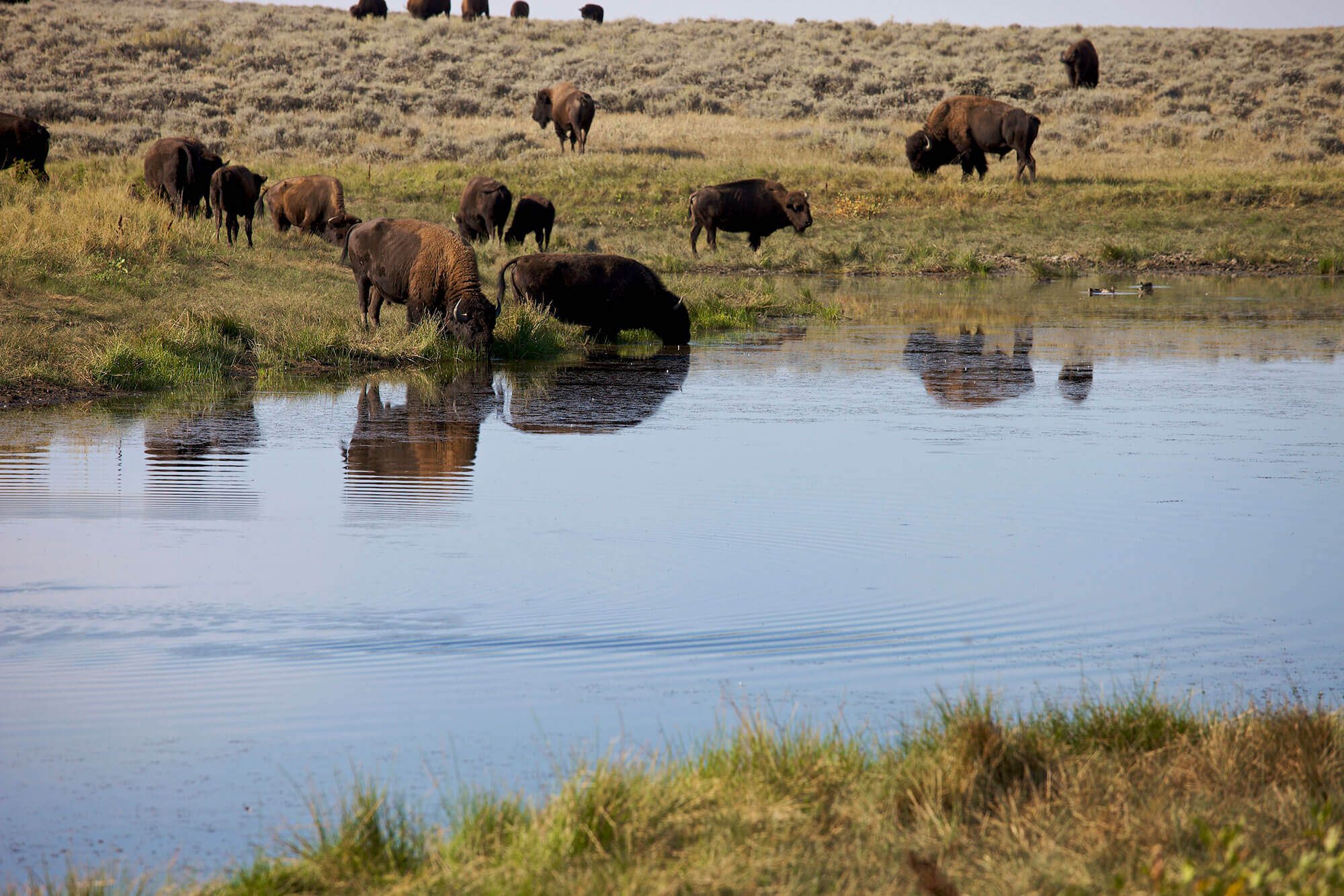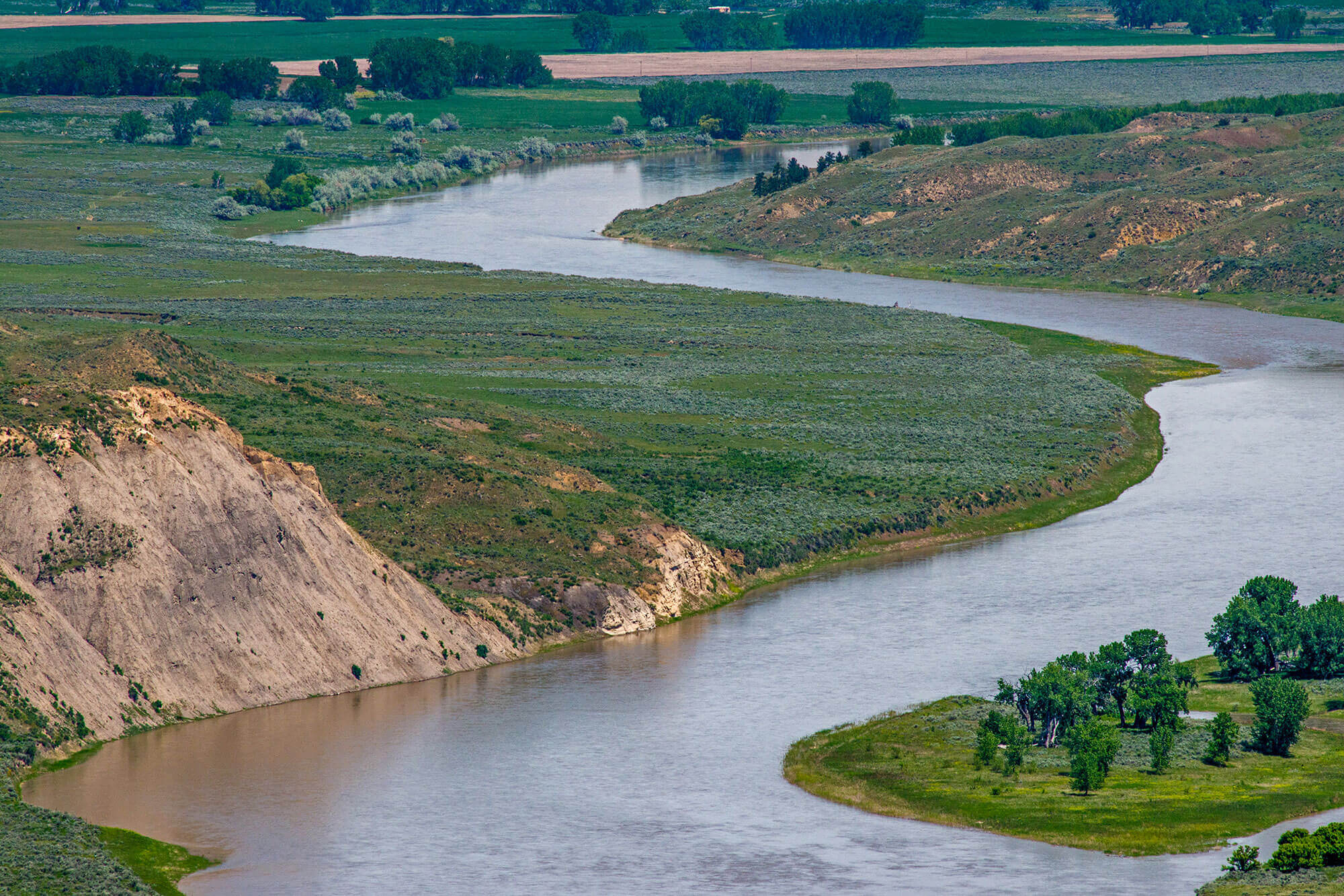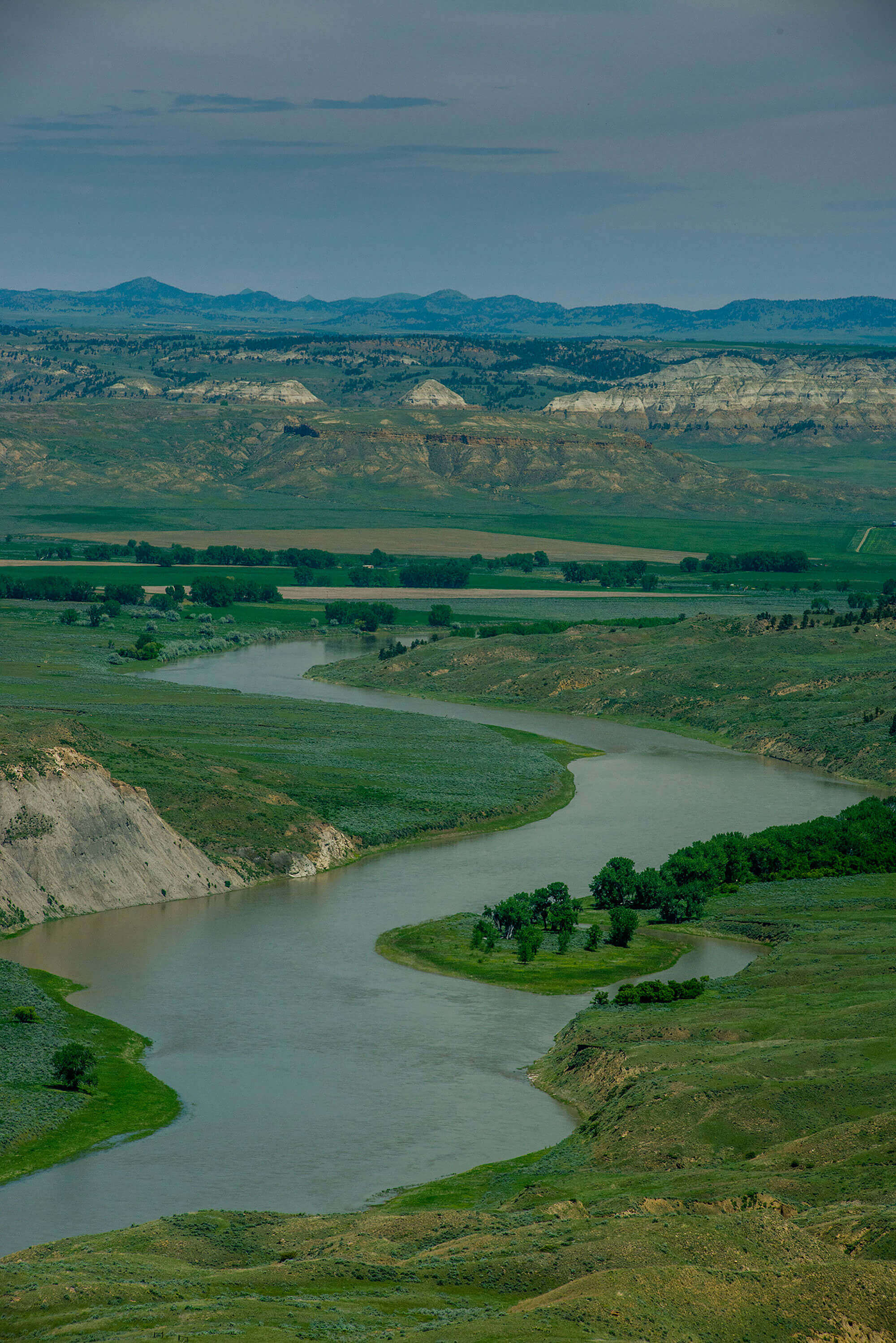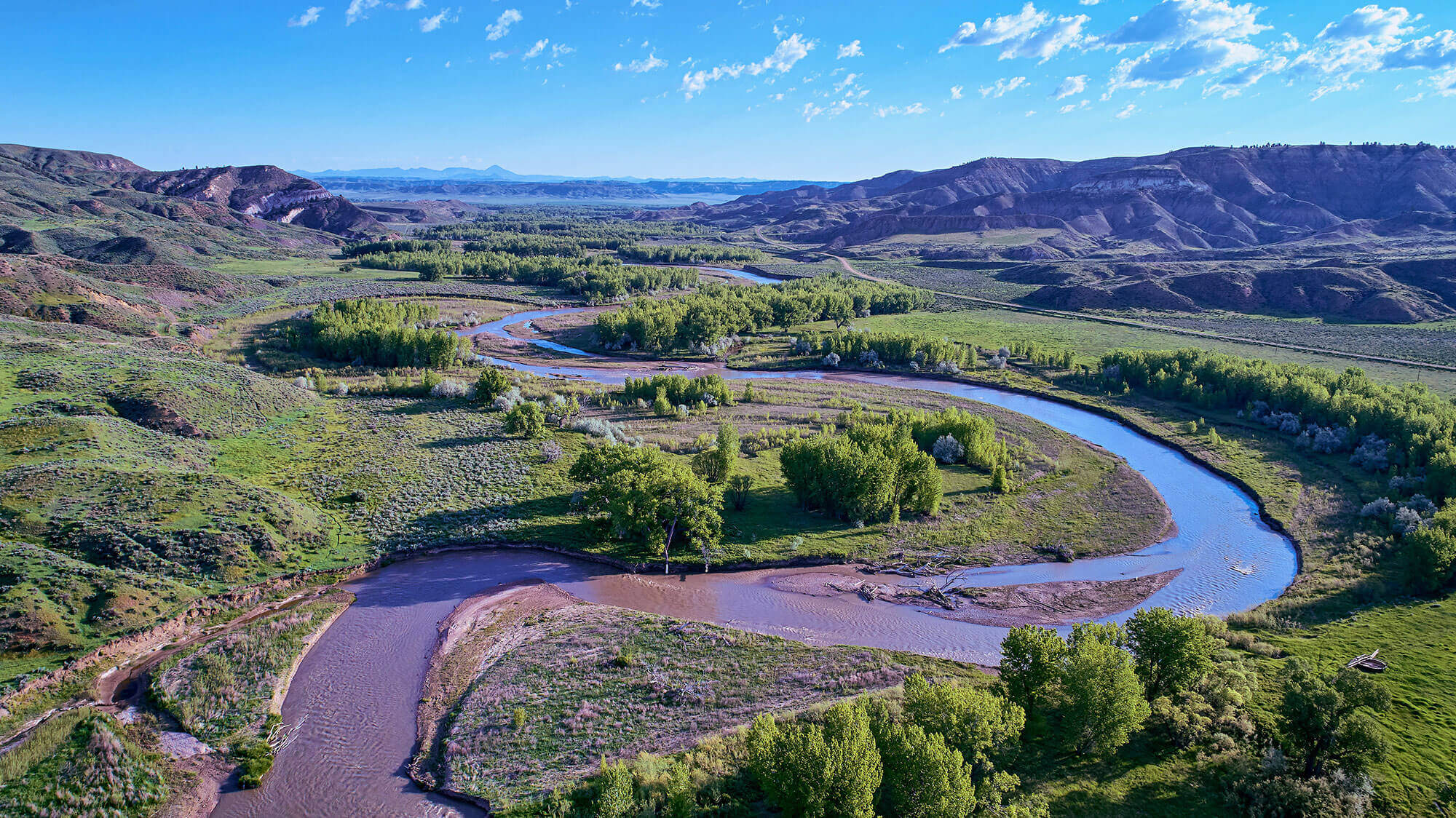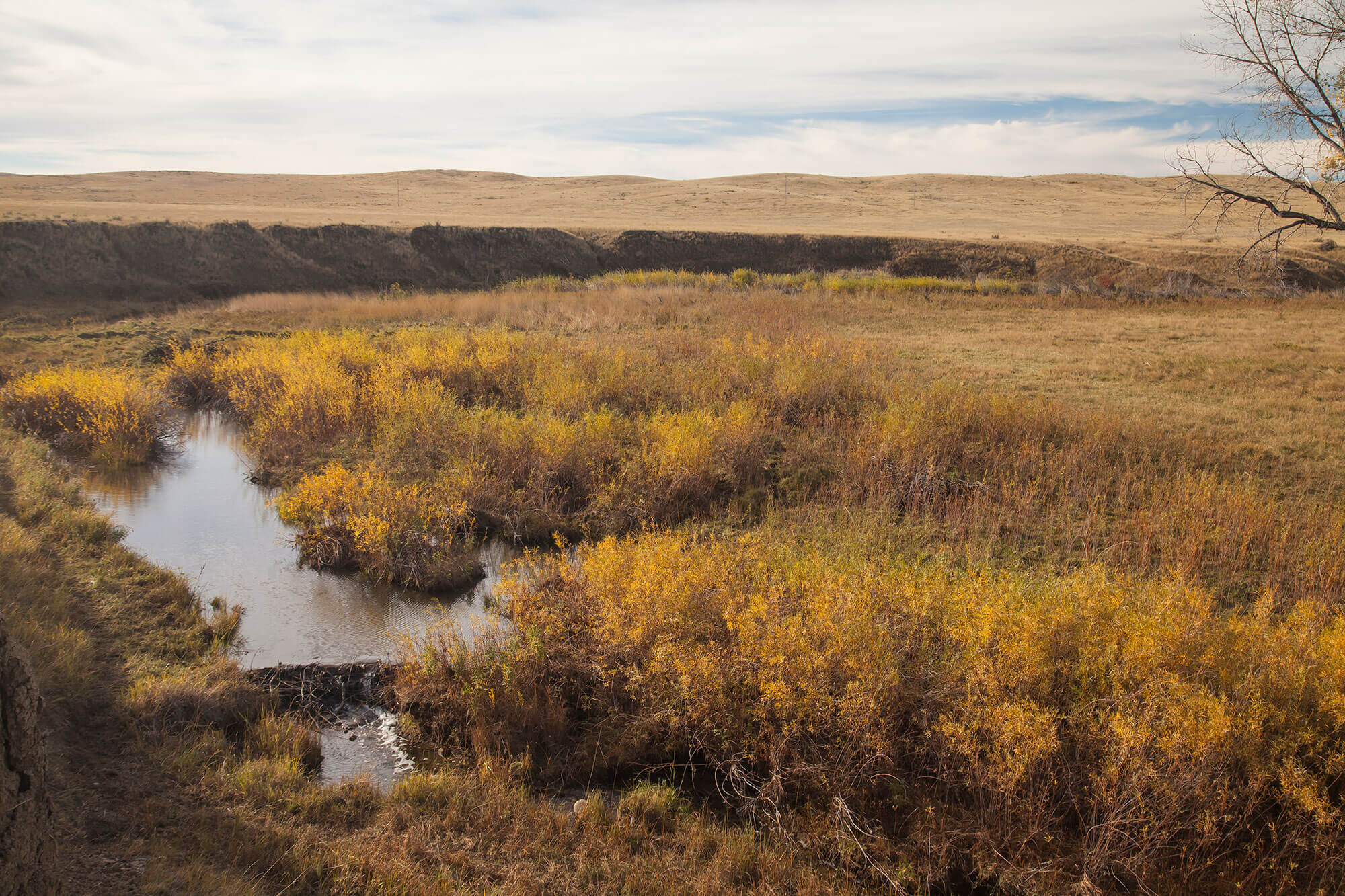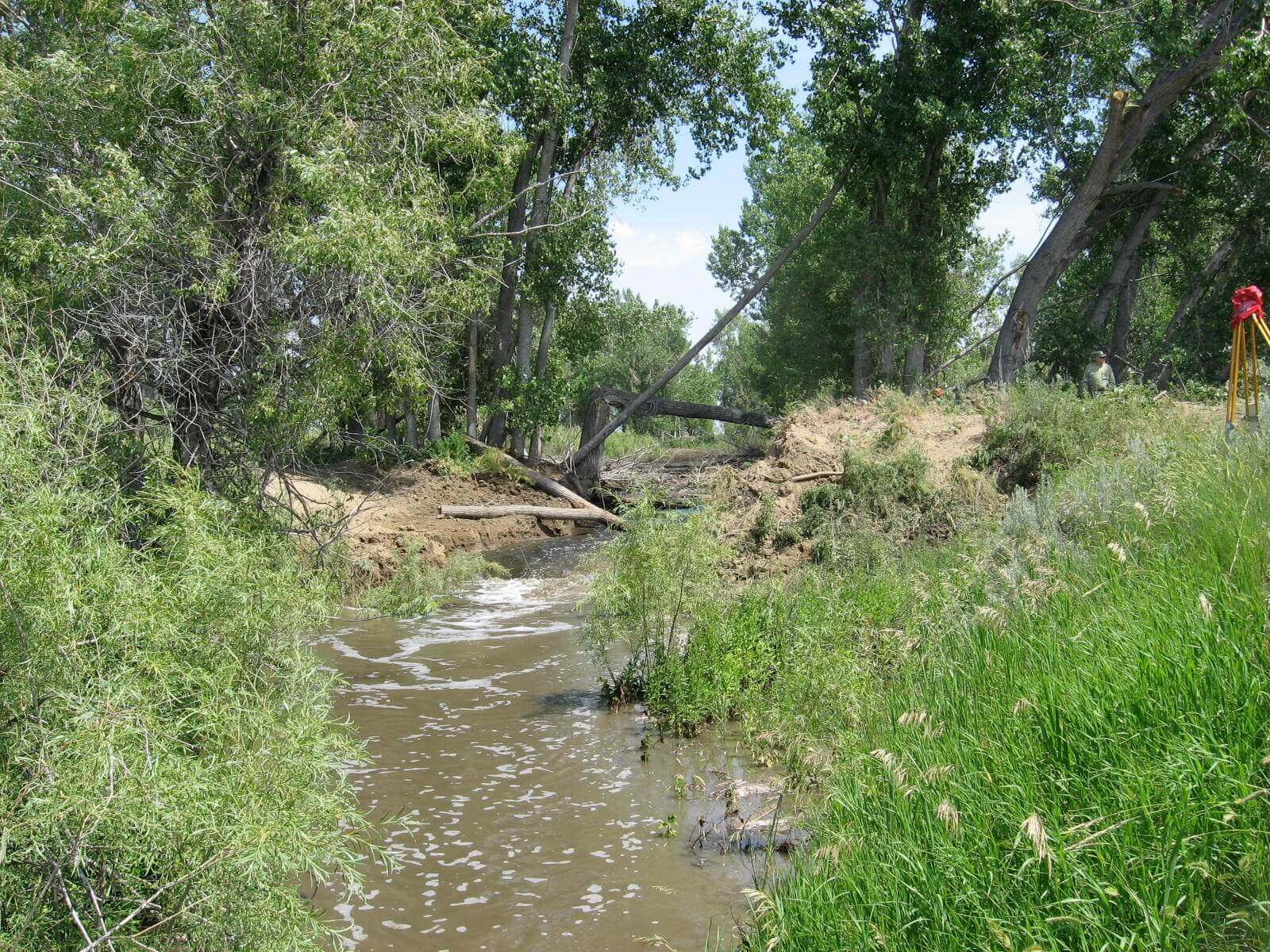Multi-story riparian corridors of perennial grasses, shrubs, and trees also store water, reduce stream flows, improve water quality, and protect against erosion.
Unfortunately, riparian areas are the most degraded habitat within the Greater American Prairie Ecosystem. Over the past century, unsustainable grazing practices coupled with sequestering of water in stock ponds and behind check dams have led to overgrazing, bank destabilization, channel incision, and drastically altered flow regimes. The degradation has been so thorough that many prairie streams are now little more than ditches that will not recover without considerable intervention.
Nevertheless, restoration is possible. Many studies have shown that, compared to cattle, bison naturally graze further from water and spend less time in riparian areas, which leads to natural recovery of riparian vegetation and increased use by a number of mammals and birds. As streams and riparian areas slowly recover, they begin to attract beavers. Beaver dams then accelerate recovery by slowing stream flow, capturing sediments, raising water tables, and improving riparian health.
Many of the Prairie’s streams are too far degraded to recover with the help of bison alone. We have initiated several restoration projects on our properties, inventorying and characterizing riparian habitats, planting woody vegetation along streams to stabilize banks, and installing beaver dam analogues to slow in stream water flows and attract beavers. We have also surveyed fish populations on the three major creeks to provide a baseline for future restoration.

